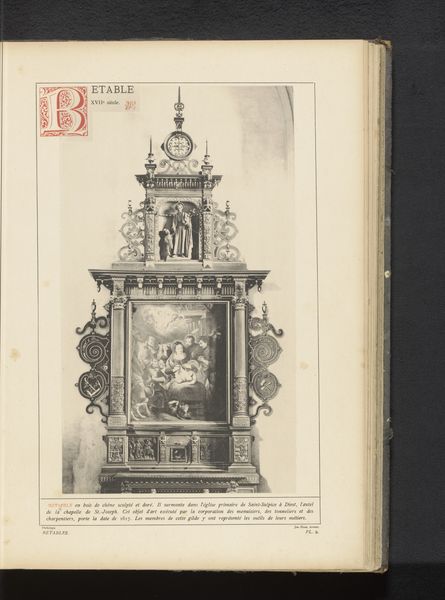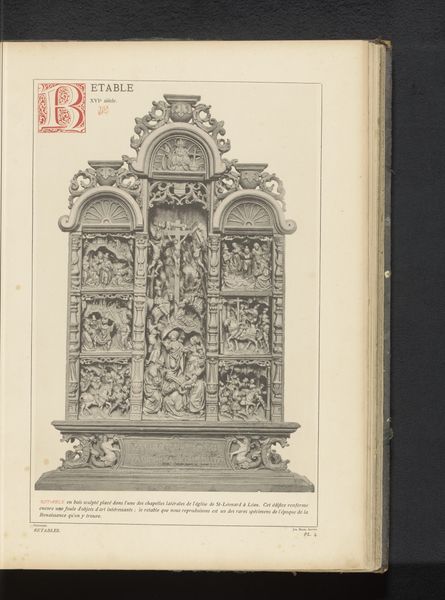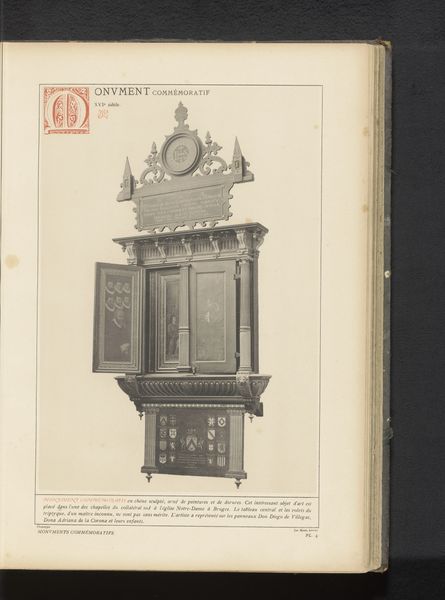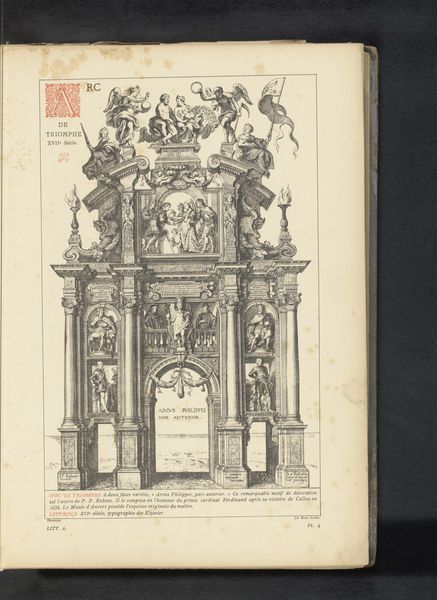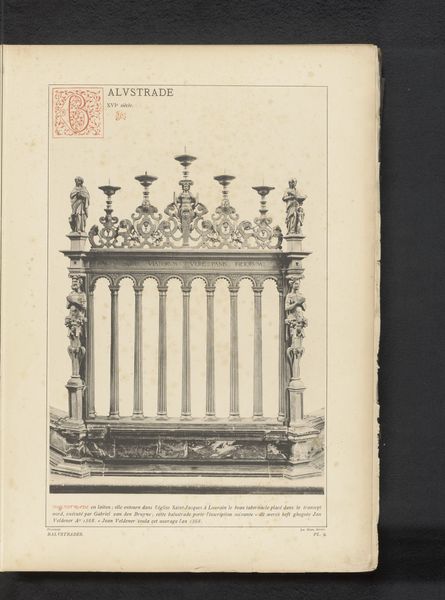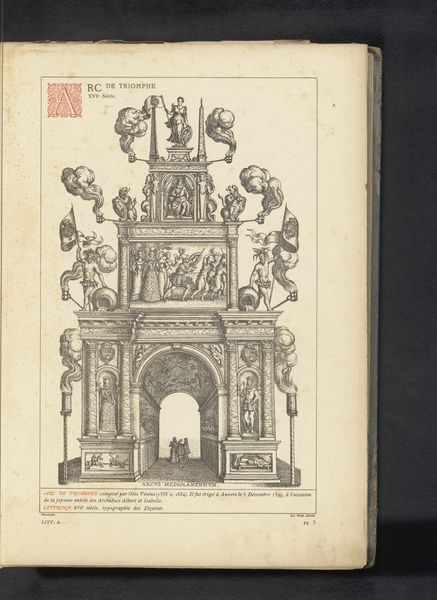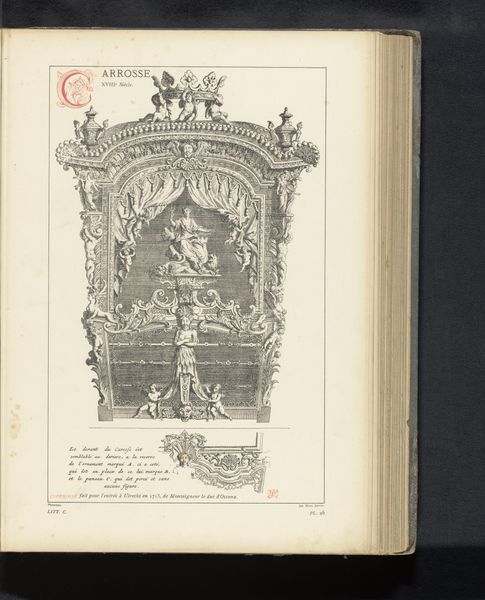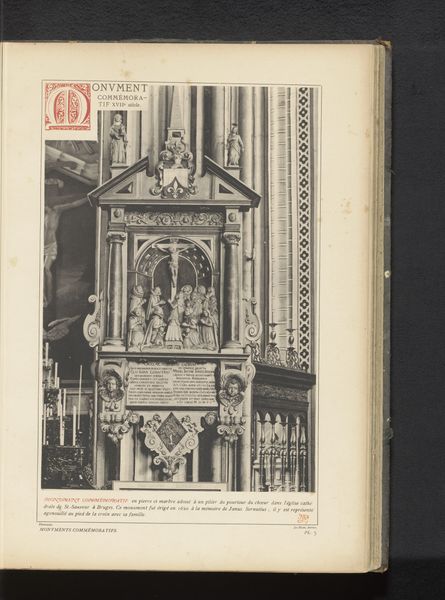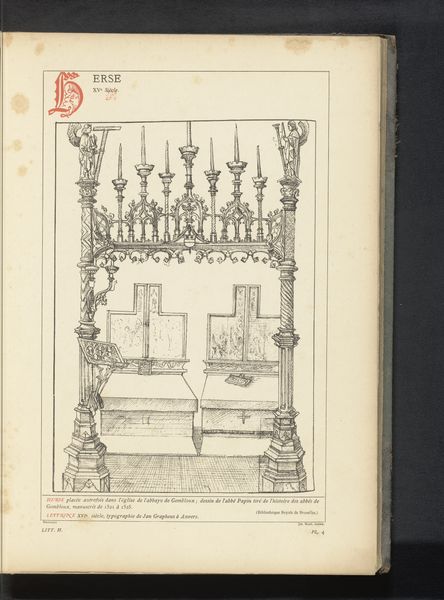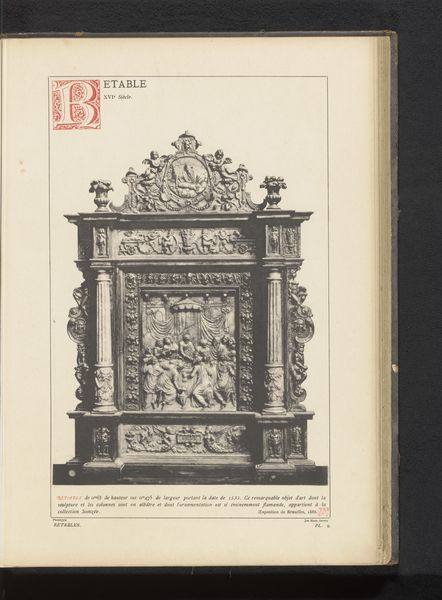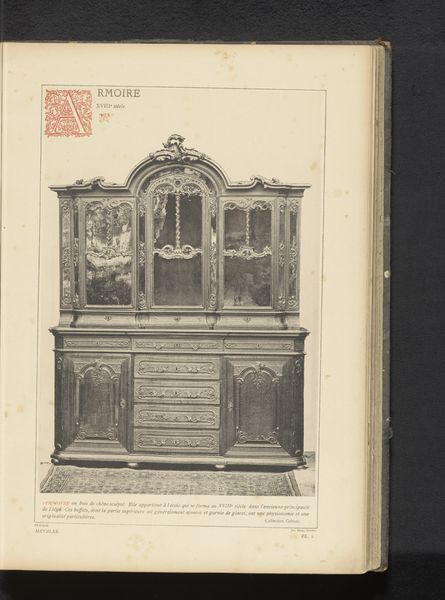
print, sculpture, engraving
#
medieval
# print
#
figuration
#
sculpture
#
line
#
history-painting
#
engraving
Dimensions: height 339 mm, width 229 mm
Copyright: Rijks Museum: Open Domain
Editor: Here we have an engraving of the stone grave monument in St. Peter's Church in Leuven, Belgium, created before 1887. Its linear style lends the scene a formal and pious air. How do you interpret this work, especially considering its historical context? Curator: This engraving gives us insight into how monuments were both physically present and represented through print. Considering this image, what I see is a representation of power dynamics in the late medieval or early Renaissance period. The kneeling figure is presumably paying homage to a deceased individual of noble standing. The monument itself functions as a propaganda piece, reinforcing social hierarchies. How does the religious setting play into the display of authority here, would you say? Editor: That's a great point about propaganda! The church would definitely add a layer of divine right or legitimacy. Perhaps the artist aimed to sanctify the legacy of the deceased person? Curator: Exactly! We can analyze the artistic choices – the size and positioning of figures, the symbolic weight of religious iconography, to understand the ways in which artists visually constructed and reinforced notions of social order, and ultimately how gender, race, and identity further nuanced the existing power structures within medieval European society. It makes you wonder about who commissioned it, their motivations, and the viewers it was intended for. Editor: So, it's more than just a grave marker, but a complex statement about power and the society of the time? I hadn't considered it in such a multifaceted way! Curator: Precisely! These images allow us a glimpse into the machinations of how individuals are mythologized through symbols and art, a pattern repeated throughout history.
Comments
No comments
Be the first to comment and join the conversation on the ultimate creative platform.
